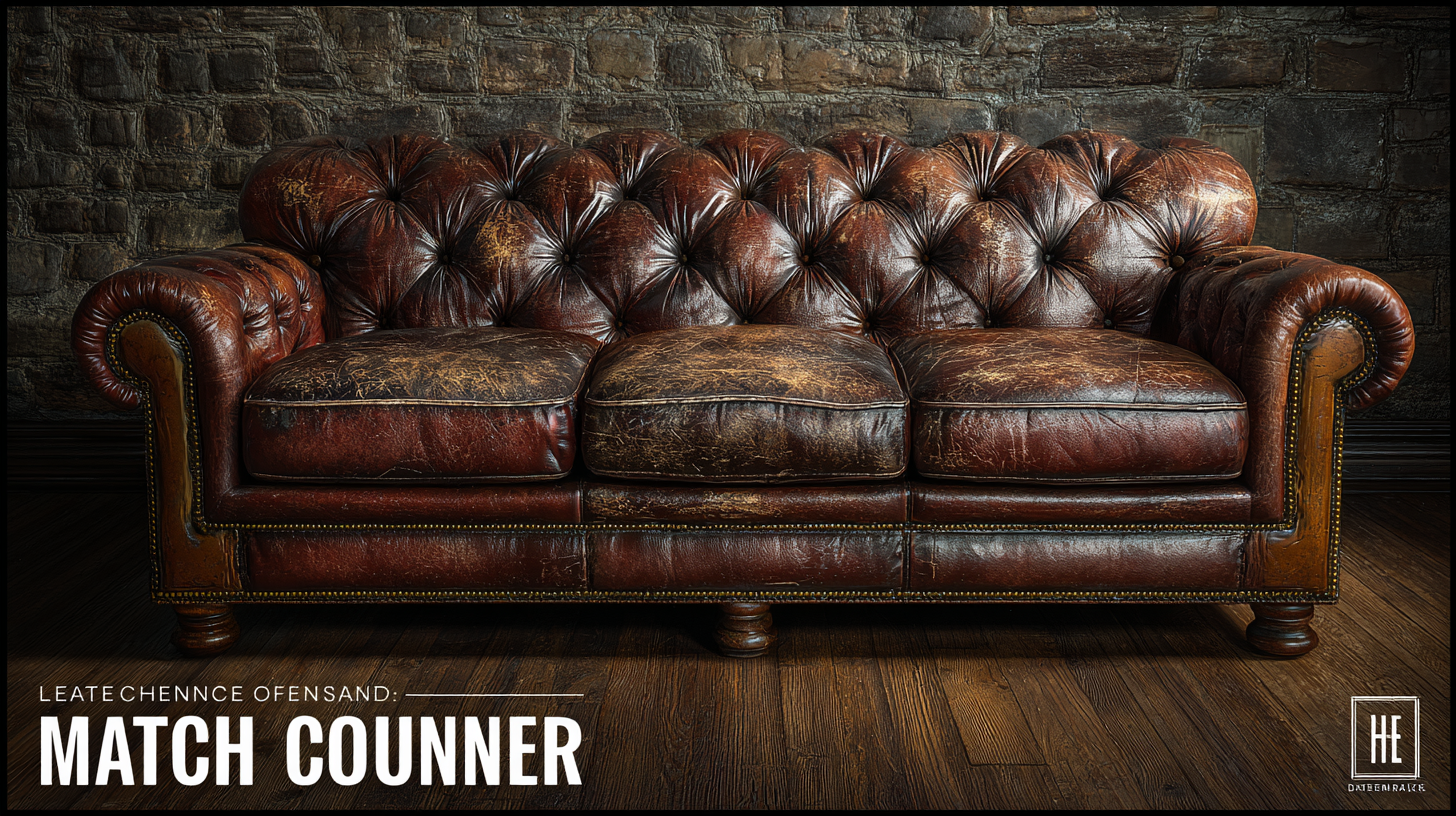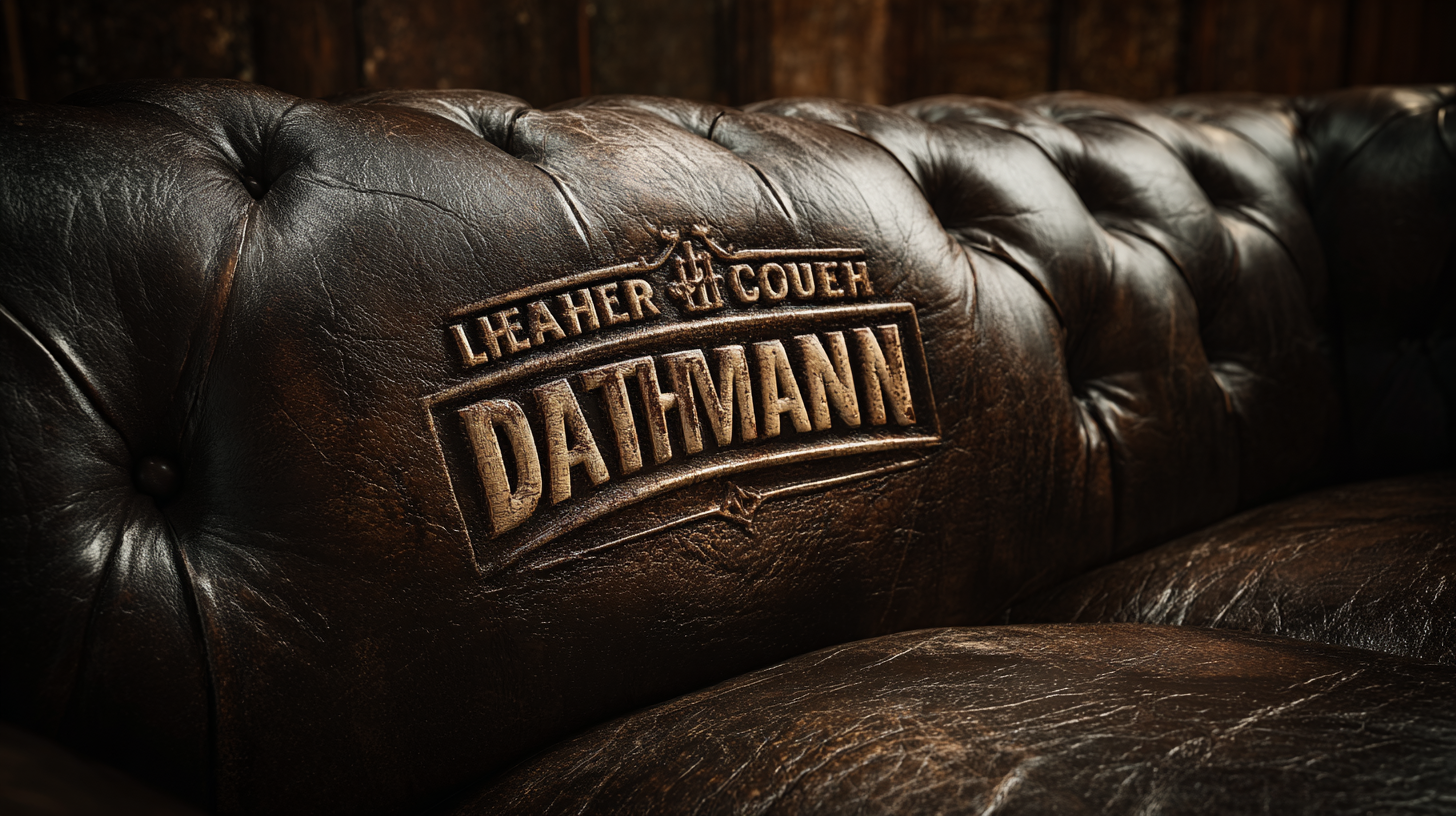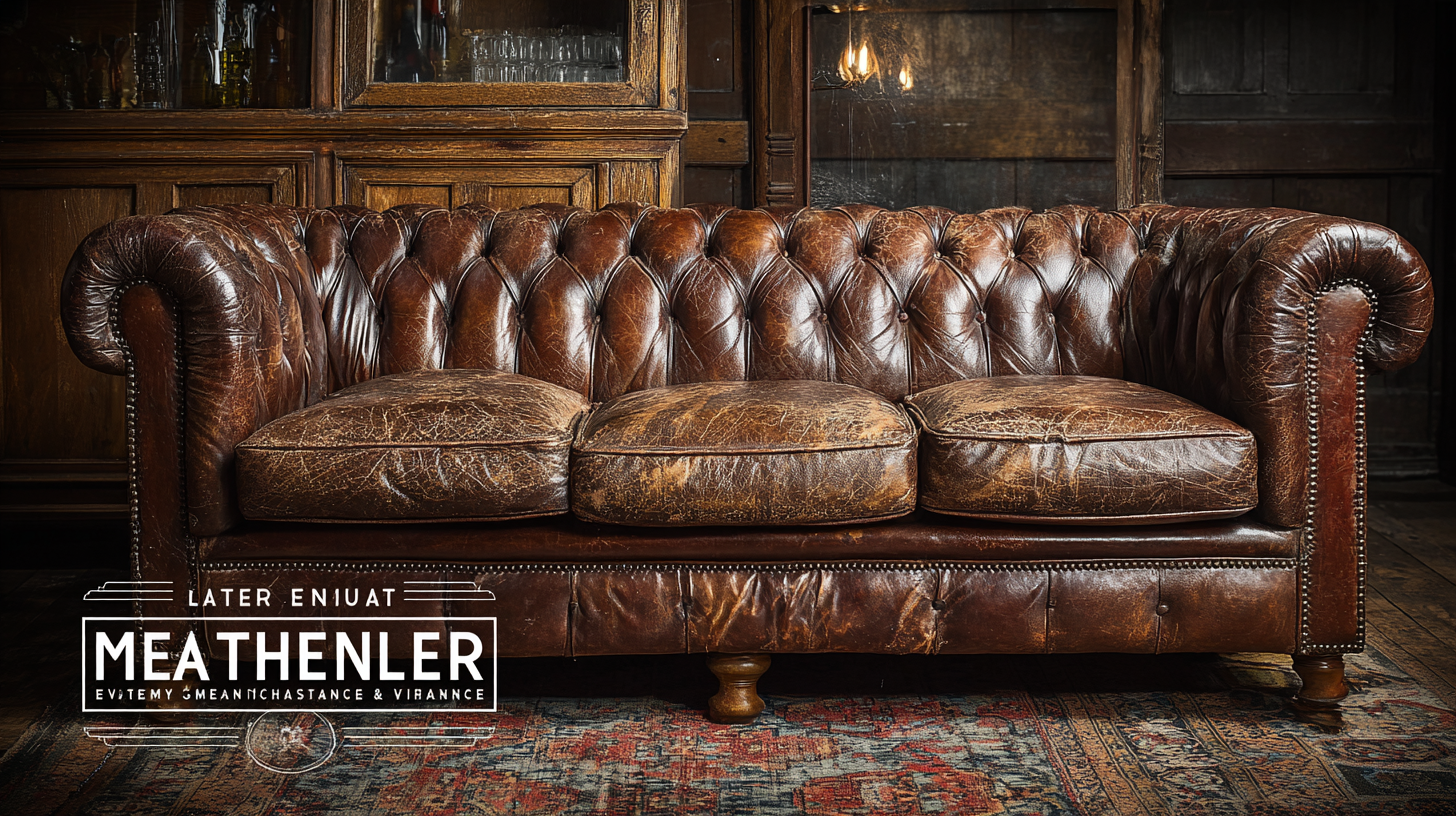Maximize Lifespan of Your Best Leather Couch with 7 Essential Maintenance Tips and Cost Effective Repair Strategies
A leather couch is not just a piece of furniture; it’s an investment that can significantly enhance the aesthetic and comfort of your living space. According to a 2022 report by the National Upholstery Association, properly maintained leather furniture can last up to 15-20 years, a remarkable lifespan compared to fabric sofas, which average only 5-10 years. However, to truly maximize the longevity of your best leather couch, it is crucial to implement essential maintenance tips and cost-effective repair strategies. With the right care, including regular cleaning and conditioning, as well as addressing minor damages promptly, you can preserve the integrity and beauty of your leather couch for years to come, allowing it to age gracefully and maintain its value. This article will guide you through seven indispensable practices to ensure your leather couch remains a centerpiece of comfort and style in your home.

Essential Routine Care for Your Leather Couch to Extend Its Lifespan
Taking care of your leather couch is essential to extend its lifespan and maintain its beauty. Essential routine care can prevent damage and keep your furniture looking new for years to come. Regularly dust your couch with a soft cloth to remove dirt and debris, which can cause scratching over time. Additionally, consider using a leather conditioner every 6-12 months to nourish the material and prevent it from drying out and cracking.
Spot cleaning any spills immediately with a damp cloth is crucial to prevent stains from setting in. For deeper cleaning, use a pH-balanced leather cleaner to ensure that the integrity of the leather is preserved. You should also be mindful of your couch’s placement; avoiding direct sunlight can help prevent fading. Finally, consider using coasters and soft throws to protect the leather from potential damage caused by everyday use. Implementing these tips will help you maintain your leather couch's charm while maximizing its longevity.
Maximize Lifespan of Your Best Leather Couch with 7 Essential Maintenance Tips and Cost Effective Repair Strategies
| Maintenance Tips | Frequency | Cost (Estimated) | Effectiveness |
|---|---|---|---|
| Dust and vacuum regularly | Weekly | Free | High |
| Apply leather conditioner | Every 6 months | $10 - $30 | High |
| Clean spills immediately | As needed | Free | Very High |
| Use a soft cloth for dusting | Weekly | $5 - $15 | Medium |
| Avoid direct sunlight | Ongoing | Free | Very High |
| Rotate cushions | Monthly | Free | Medium |
| Use leather repair kits for scratches | As needed | $10 - $50 | High |
Key Cleaning Techniques to Preserve the Quality of Leather Furniture
Maintaining the quality of your leather furniture is crucial for preserving its aesthetic appeal and longevity. One of the fundamental cleaning techniques is regular dusting. Use a soft, dry microfiber cloth to gently wipe down your leather couch, removing dirt and debris that may accumulate daily. This simple practice prevents grime from settling into the leather's pores, which could lead to discoloration and wear over time.
Another essential tip is to perform deep cleaning periodically. For this, a specialized leather cleaner is recommended. Apply a small amount to a soft cloth and work it into the leather using circular motions. Be sure to test the cleaner on an inconspicuous area first to avoid damage. This process not only cleans the surface but also helps maintain the leather's natural oils, keeping it supple and resistant to cracking.
Finally, conditioning is a key maintenance step. Using a leather conditioner every 6-12 months replenishes the oils that can dry out over time. Apply the conditioner evenly and allow it to absorb fully before using the couch again. This not only enhances the leather's appearance but also extends its lifespan, ensuring your investment remains a treasured part of your home for years to come.
Identifying Common Wear and Tear on Leather and How to Address It
When it comes to maintaining your beloved leather couch, understanding common wear and tear is essential. Leather can develop scratches, cracks, and fading over time, but recognizing these issues early can help you address them effectively. Regularly inspect your couch for any signs of damage and keep it away from direct sunlight to prevent fading.
To combat scratches, you can use a leather conditioner, which not only nourishes the material but also helps to hide minor imperfections. For deeper scratches, a leather repair kit can prove beneficial. Simply follow the instructions to match the color of your couch and seamlessly restore its appearance.
Additionally, make it a habit to clean your leather couch periodically. Use a damp cloth to wipe away dust, and consider using a specialized leather cleaner to maintain its luster. By taking proactive steps and addressing issues promptly, you can extend the lifespan of your leather couch significantly. Remember, a little maintenance goes a long way in preserving the beauty of your furniture.
Maximize Lifespan of Your Best Leather Couch
This chart depicts the importance level of various maintenance tips for enhancing the lifespan of your leather couch. Proper care and attention to these factors can significantly improve the longevity and appearance of your furniture.
Cost-Effective Repair Options for Minor Damage to Your Leather Couch
Leather couches are timeless investments in home decor, but minor damages such as scratches and scuffs can detract from their elegance. According to a report from the Leather and Hide Council, 75% of leather upholstery issues are due to everyday use rather than manufacturing flaws. Addressing these minor damages promptly not only maintains the beauty of your couch but also prolongs its lifespan significantly.

For cost-effective repair options, consider using a leather repair kit, which typically includes tools and compounds specifically designed for common issues. These kits can cost as little as $20 and provide an easy remedy for scratches or minor tears. Data from the Furniture and Home Furnishings Association indicates that DIY repairs can save homeowners up to 60% compared to professional repair services. Additionally, applying leather conditioner every six months can help maintain the suppleness of the leather, preventing more extensive damage. Investing in these simple maintenance strategies allows you to keep your leather couch looking pristine without breaking the bank.
Recommendations for Protecting Your Leather from Environmental Factors
Leather furniture is a luxurious addition to any home, but it also requires proper protection from environmental factors to ensure its longevity. According to a report by the Leather Research Institute, exposure to sunlight and changes in humidity can significantly deteriorate leather quality. UV rays can cause fading and dryness, leading to cracks and tears. It's recommended to place your leather couch away from direct sunlight and use window treatments to minimize exposure.
Humidity is another crucial aspect; a relative humidity level of 40-50% is ideal for maintaining leather integrity. Too much moisture can promote mold growth, while too little can cause the leather to dry out. Using a dehumidifier in humid conditions or a humidifier in dry weather can help control your home’s microclimate. Additionally, applying a high-quality leather conditioner every 6-12 months can introduce necessary oils back into the material, enhancing its resilience against environmental stressors. By adhering to these recommendations, you can effectively prolong the lifespan of your leather couch, ensuring it remains a centerpiece of comfort and style in your home.


